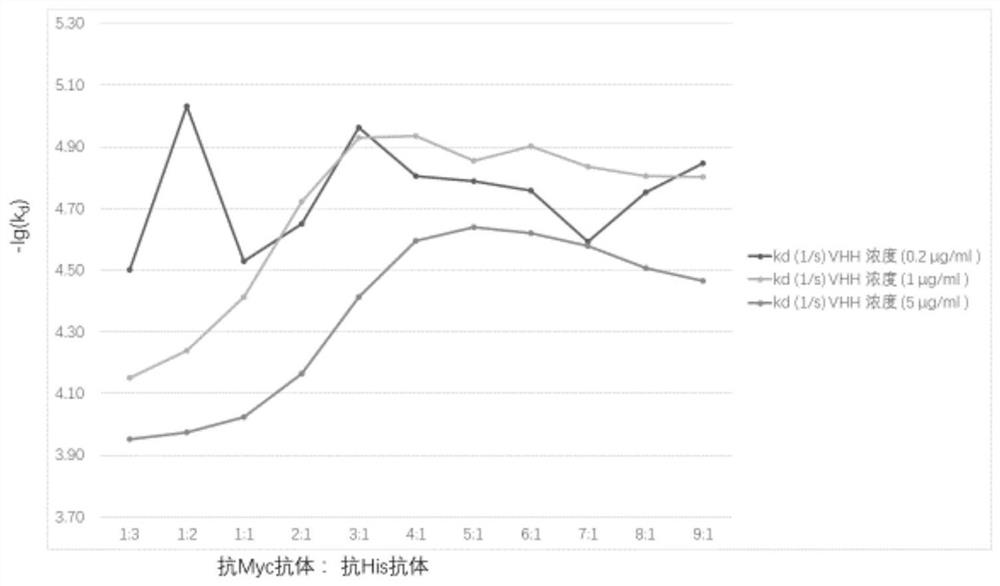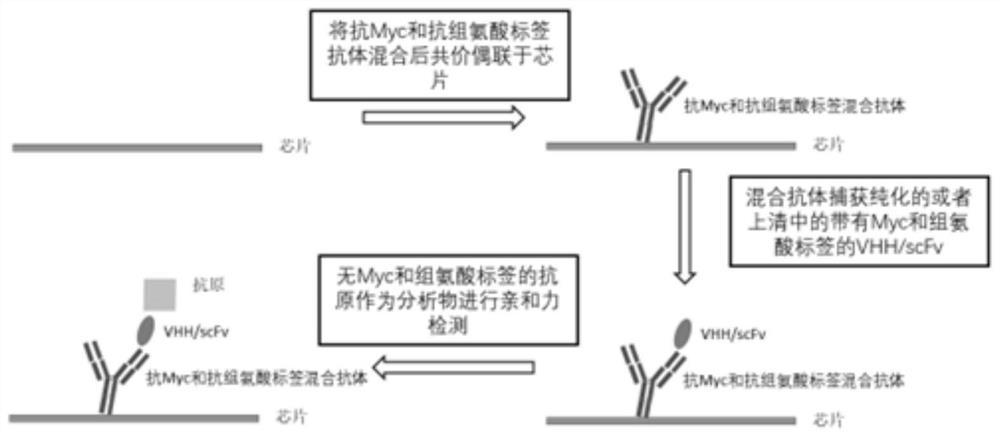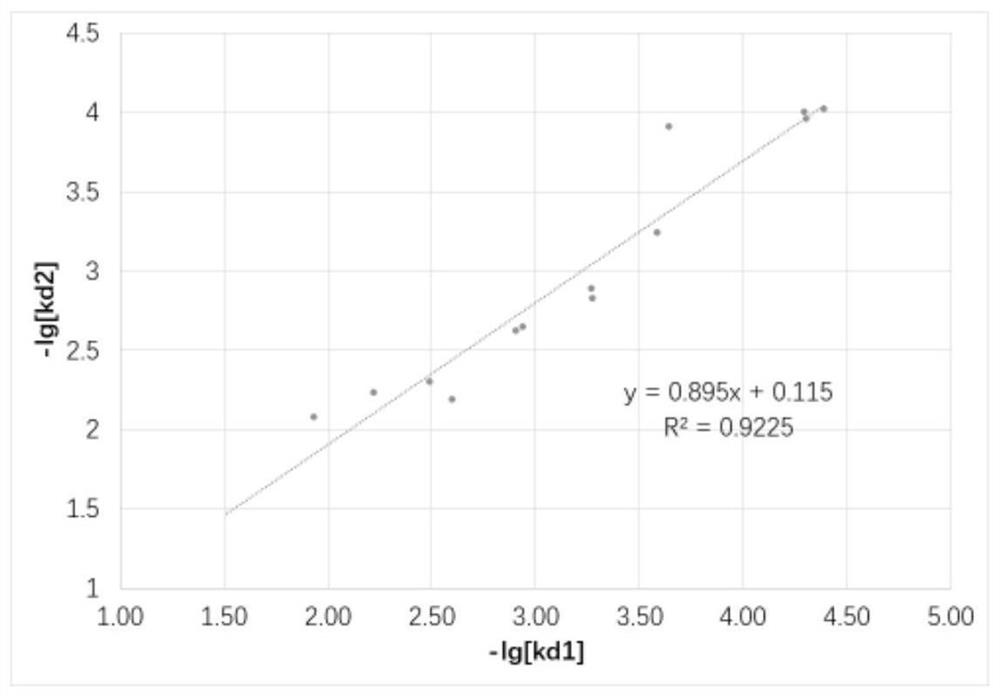Method for screening VHH/scFv by using mixed antibody capture method
A capture method and antibody technology, applied in the field of biomedicine, can solve the problems of difficult to meet the requirements of mass screening, easy omission, poor affinity, etc., to save time and cost, expand the detection range, and improve the effect of accuracy
- Summary
- Abstract
- Description
- Claims
- Application Information
AI Technical Summary
Problems solved by technology
Method used
Image
Examples
Embodiment 1
[0037] Example 1 Optimizing the capture conditions of mixed antibody capture VHH / scFv
[0038] First, prepare mixed antibodies with different mixing ratios for capturing VHH, and mix individual anti-Myc tag antibodies and individual anti-His tag antibodies according to different ratios, so that the ratios of anti-Myc tag antibody content to anti-His tag antibody content are respectively : 1:3, 1:2, 1:1, 2:1, 3:1, 4:1, 5:1, 6:1, 7:1, 8:1, 9:1, re-prepared with only anti The solution of His tag antibody and the solution containing only anti-Myc tag antibody, and ensure that the saturation concentration of all single or mixed antibodies is 30 μg / ml, waiting to be tested on the machine; secondly, after activating the Cytiva CM5 chip, use amino-coupling reagents to The capture antibody is coated on the chip; finally, the apparent dissociation rate constant of the coated capture antibody and VHH is detected, and the VHH flows through the chip. After a period of time, it dissociates ...
Embodiment 2
[0042] Example 2 Unlabeled antigen as analyte for VHH / scFv screening using mixed antibody capture method
[0043] Under the optimal capture conditions obtained in the study in Example 1, the anti-Myc tag antibody and the anti-His tag antibody were mixed at a ratio of 5:1 to prepare a chip. Next, the supernatant VHH / scFv is captured. After the capture is completed, use the unlabeled antigen as the analyte to k d Detection screening.
[0044] like figure 2 As shown, it is a schematic diagram of the overall process of the mixed antibody capture method provided by the present invention. First, mix the anti-Myc tag antibody and the anti-His tag antibody at a ratio of 5:1, and ensure that the antibody saturation concentration is 30 μg / ml. The kit is used to coat the mixed antibody onto the CM5 chip in a covalently coupled manner; secondly, the VHH / scFv supernatant flows through the Fc2 channel to be captured by the mixed antibody; finally, the unlabeled antigen is used as the Th...
Embodiment 3
[0054] Example 3 Half-Fc tag antigen as analyte for VHH / scFv screening using mixed antibody capture method
[0055] Under the optimal capture conditions obtained in the study in Example 1, the anti-Myc tag antibody and the anti-His tag antibody were mixed at a ratio of 5:1 to prepare a chip. Next, the supernatant VHH / scFv was captured. After the capture was completed, the half-Fc tagged antigen was used as the analyte to perform k d Detection screening. Wherein, the half Fc tag is human Fc.
[0056] First, mix anti-Myc tag antibody and anti-His tag antibody at a ratio of 5:1, and ensure that the antibody saturation concentration is 30 μg / ml, and use an amino coupling kit to coat the mixed antibody in a covalently coupled manner to the CM5 chip; secondly, let the VHH / scFv flow through the Fc2 channel, so that it is captured by the mixed antibody to the Fc2 channel; finally, use the half-Fc-labeled antigen as the analyte for detection, so that multiple concentrations of unlabe...
PUM
 Login to View More
Login to View More Abstract
Description
Claims
Application Information
 Login to View More
Login to View More - R&D Engineer
- R&D Manager
- IP Professional
- Industry Leading Data Capabilities
- Powerful AI technology
- Patent DNA Extraction
Browse by: Latest US Patents, China's latest patents, Technical Efficacy Thesaurus, Application Domain, Technology Topic, Popular Technical Reports.
© 2024 PatSnap. All rights reserved.Legal|Privacy policy|Modern Slavery Act Transparency Statement|Sitemap|About US| Contact US: help@patsnap.com










